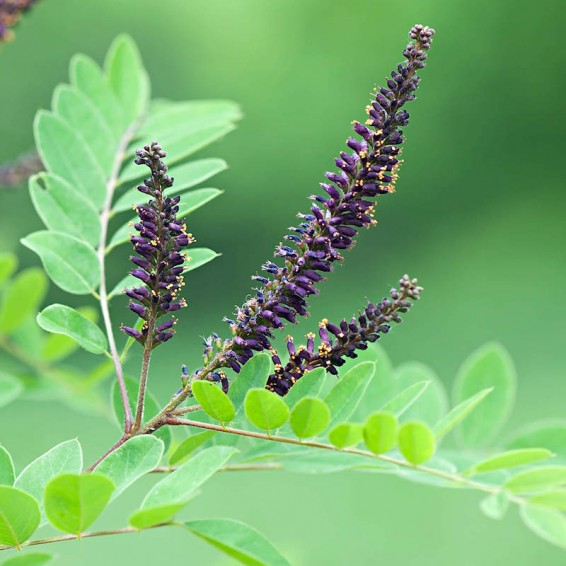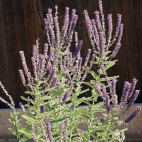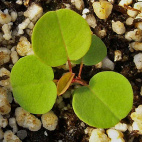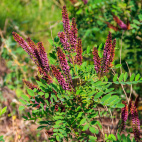False Indigo Seeds
- HOW TO GROW
- FAST FACTS
- REVIEWS
HOW TO GROW
Sowing: This seed needs to be scarified before planting to speed germination; one way to accomplish this it to pour 180 degrees F water over the seed and soak it overnight the day before planting. Since the plants do not tolerate transplanting, direct sowing is best. In late fall or early spring, sow the scarified seed on the surface of the soil. Germination may be slow, but should take place within 20-30 days.
Growing: If drought conditions persist or the climate is especially hot, provide water. This plant adapts well to many soil types including poor or dry soil, but prefers moist soil in full sun or partial shade. After the plant finishes flowering, prune it back for tidy growth and to prevent reseeding. False Indigo spreads prolifically and can become invasive if left to itself. These flowers attract butterflies and bees. We cannot sell this seed to customers in WA.
Harvesting: False Indigo makes an unusual, striking cut flower. Cut the stems as soon as the flower spikes begin to bloom.
Seed Saving: Collect the seed pods as soon as they begin to dry and turn color. Since the pods will split open when they dry completely, they should be harvested before then to prevent loss. Spread the pods out to dry in a protected location away from direct sunlight, then separate the seed from the pods. Store the cleaned false indigo seeds in a cool, dry place for 3-4 years.
FAST FACTS
Common Names: Desert False Indigo, Indigo Bush, Bastard Indigo, River Locust
Latin Name: Amorpha fruticosa
Species Origin: US Native Wildflower
Type: Native Wildflowers
Life Cycle: Perennial
USDA Zones: 3, 4, 5, 6, 7, 8, 9, 10, 11
US Regions: California, Mountain, Arid/Desert, Plains/Texas, Midwest, Northern, Northeast, Southeast
Seeds per Ounce: 3,900
Stratification: Cold/Wet for 1 Week
Germination Ease: Stratify 1 Week
Sunlight: Full Sun, Part Sun
Height: 120 Inches
Color: Purple
Bloom Season: Blooms Early Summer, Blooms Late Summer
Uses: Attracts Pollinators, Deer Resistant
Excellent products
The seeds are germinating nicely after following the seller's directions . I'm very happy with my order, these seeds and every other type of seed I've ordered through this company .
DESCRIPTION
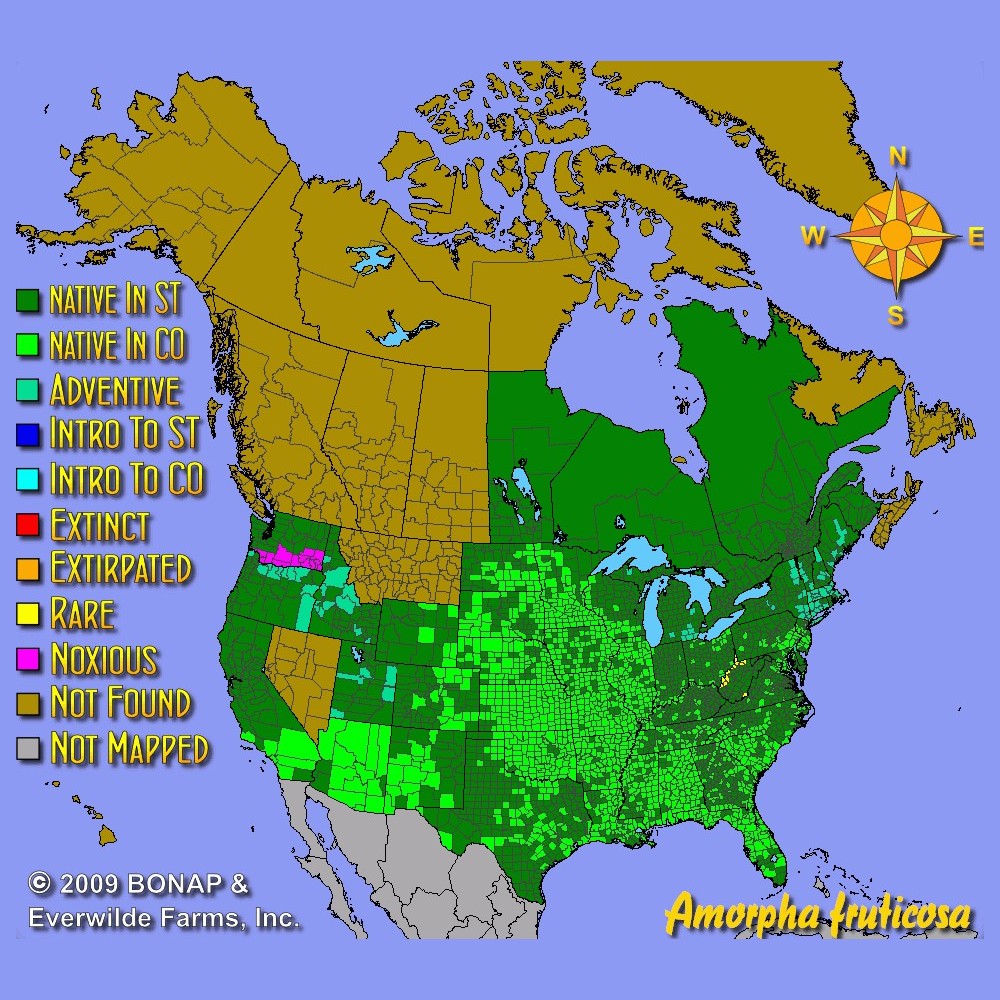
HOW TO GROW
Sowing: This seed needs to be scarified before planting to speed germination; one way to accomplish this it to pour 180 degrees F water over the seed and soak it overnight the day before planting. Since the plants do not tolerate transplanting, direct sowing is best. In late fall or early spring, sow the scarified seed on the surface of the soil. Germination may be slow, but should take place within 20-30 days.
Growing: If drought conditions persist or the climate is especially hot, provide water. This plant adapts well to many soil types including poor or dry soil, but prefers moist soil in full sun or partial shade. After the plant finishes flowering, prune it back for tidy growth and to prevent reseeding. False Indigo spreads prolifically and can become invasive if left to itself. These flowers attract butterflies and bees. We cannot sell this seed to customers in WA.
Harvesting: False Indigo makes an unusual, striking cut flower. Cut the stems as soon as the flower spikes begin to bloom.
Seed Saving: Collect the seed pods as soon as they begin to dry and turn color. Since the pods will split open when they dry completely, they should be harvested before then to prevent loss. Spread the pods out to dry in a protected location away from direct sunlight, then separate the seed from the pods. Store the cleaned false indigo seeds in a cool, dry place for 3-4 years.
FAST FACTS
Common Names: Desert False Indigo, Indigo Bush, Bastard Indigo, River Locust
Latin Name: Amorpha fruticosa
Species Origin: US Native Wildflower
Type: Native Wildflowers
Life Cycle: Perennial
USDA Zones: 3, 4, 5, 6, 7, 8, 9, 10, 11
US Regions: California, Mountain, Arid/Desert, Plains/Texas, Midwest, Northern, Northeast, Southeast
Seeds per Ounce: 3,900
Stratification: Cold/Wet for 1 Week
Germination Ease: Stratify 1 Week
Sunlight: Full Sun, Part Sun
Height: 120 Inches
Color: Purple
Bloom Season: Blooms Early Summer, Blooms Late Summer
Uses: Attracts Pollinators, Deer Resistant
Reviews
Review
Excellent products
The seeds are germinating nicely after following the seller's directions . I'm very happy with my order, these seeds and every other type of seed I've ordered through this company .
Also Consider These:
-
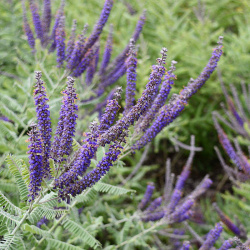 On Sale!
Lead Plant Seeds
Amorpha canescens
Once established, this singular prairie shrub is extremely drought tolerant and can last for generations. It develops spikes of tiny purple flowers that attract pollinators.Quick Viewx
On Sale!
Lead Plant Seeds
Amorpha canescens
Once established, this singular prairie shrub is extremely drought tolerant and can last for generations. It develops spikes of tiny purple flowers that attract pollinators.Quick ViewxLead Plant Seeds
Amorpha canescens
Once established, this singular prairie shrub is extremely drought tolerant and can last for generations. It develops spikes of tiny purple flowers that attract pollinators.
$3.48 Pkt - $16.57 / Oz -
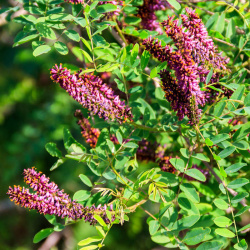 On Sale!
Fragrant False Indigo Seeds
Amorpha nana
This drought tolerant, low-growing shrub grows naturally in the open prairie or on rocky hillsides. Its extensive root system makes it extremely effective in erosion control, or as a windbreak.Quick Viewx
On Sale!
Fragrant False Indigo Seeds
Amorpha nana
This drought tolerant, low-growing shrub grows naturally in the open prairie or on rocky hillsides. Its extensive root system makes it extremely effective in erosion control, or as a windbreak.Quick ViewxFragrant False Indigo Seeds
Amorpha nana
This drought tolerant, low-growing shrub grows naturally in the open prairie or on rocky hillsides. Its extensive root system makes it extremely effective in erosion control, or as a windbreak.
$3.75 Pkt - $80.00 / Oz





